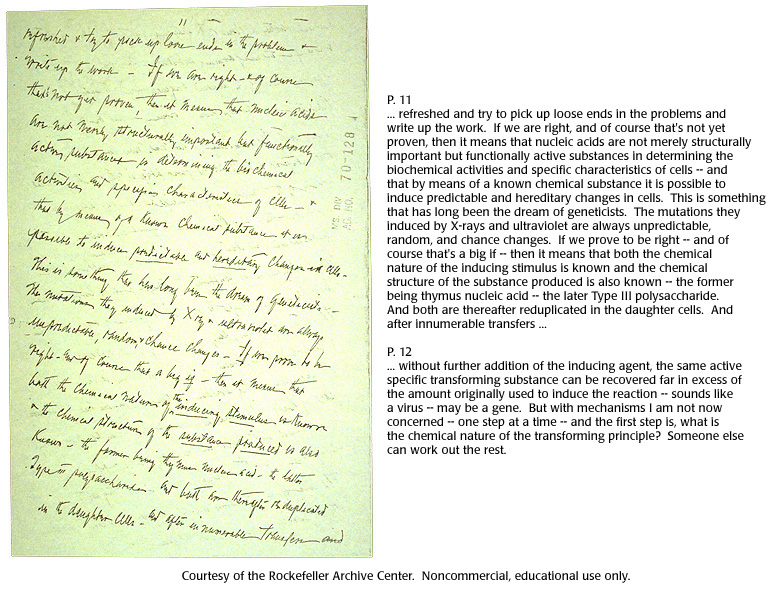Gallery 17: Oswald Avery's letter to his brother, 1943

A page from the May 15, 1943 letter from Oswald Avery to his brother Roy. In the letter Avery speculated on how transformation could happen. Avery never publicly connected genes with DNA and his transformation experiments.
oswald avery, transformation experiments, brother roy, genes, dna
- ID: 16381
- Source: DNALC.DNAFTB
Related Content
16390. Video 17: Maclyn McCarty, clip 6
How the bacterial transformation experiments provided the first real opportunity to study the chemical nature of the gene.
15674. Oswald Avery (c.1930)
Oswald Avery, circa 1930.
16374. Concept 17: A gene is made of DNA.
Oswald Avery's team proves that DNA, not protein, is the genetic molecule.
16387. Video 17: Maclyn McCarty, clip 3
Describing the in vitro transformation experiments: the effect of removing polysaccharides from the bacterial extracts.
16388. Video 17: Maclyn McCarty, clip 4
Describing the in vitro transformation experiments: the effect of destroying nucleic acids.
16393. Problem 17: A gene is made of DNA.
Experiment with rough and smooth Pneumococcus DNA.
16375. Animation 17: A gene is made of DNA.
Oswald Avery explains Fred Griffith's and his own work with Pneumococcus bacteria.
16391. Biography 17: Oswald Theodore Avery (1877-1955)
In 1944, Oswald Avery and his colleagues, Colin MacLeod and Maclyn McCarty published their landmark paper on the transforming ability of DNA.
16389. Video 17: Maclyn McCarty, clip 5
Characterizing the resistence to the discovery of DNA as the transforming factor: running against existing dogma.
16385. Video 17: Maclyn McCarty, clip 1
Commenting on Avery as a scientific group leader and as a person.












